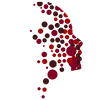In this practice, there are three main types of feeding tubes commonly used. The classification of the tubes refers to the route or pathway of the tube itself. There can be multiple variations of each type of tube and your doctors will determine which is best for you.
NASOGASTRIC TUBES (NG TUBES)
These are tubes generally used for more short-term purposes. These tubes are placed through the nostril, pass through the throat, through the full length of the esophagus and end in the stomach or small intestine. These tubes do not require surgical placement, although their placement is typically checked with an x-ray before used for feeding to ensure adequate situation in the stomach/intestine.
Because these tubes are placed through the nose, they are generally not indicated for long-term use (>30 days) as this placement can become uncomfortable and cumbersome.
Gastrostomy Tubes (G-Tubes)
These tubes are typically placed when a more long-term need for tube feeding is anticipated. These tubes are surgically placed into the stomach and held in place by an inflatable cuff. G-tubes can be concealed easily beneath clothing and are therefore much less conspicuous than an NG tube. A G-tube can be indicated for use over several weeks to several years, although generally should be replaced every six months. Although the initial placement is surgically done, replacement of the tubes is easily done in an office setting and is virtually painless.
Jejunostomy Tubes (J-Tubes)
These tubes are typically used for the same reasons a g-tube would be used, although this is surgically placed further down the digestive tract, into the jejunum, which is a portion of the small intestine near the stomach. The j-tube is typically only used when a g-tube cannot be placed, although the reasons for this vary greatly. A more common reason a j-tube is used is to reduce the potential for gastroesophageal reflux, which occurs when stomach contents leave the stomach and pass into the esophagus, the opposite direction food should travel through the digestive tract. If this problem is severe, your doctor may opt for a j-tube placement. Other reasons include abdominal surgery, which may have altered the gastrointestinal tract. Your doctor will determine which tube is most appropriate for you, depending on your individual needs. Like the g-tube, the j-tube can be used for several weeks to several years, although will require periodic replacement.

